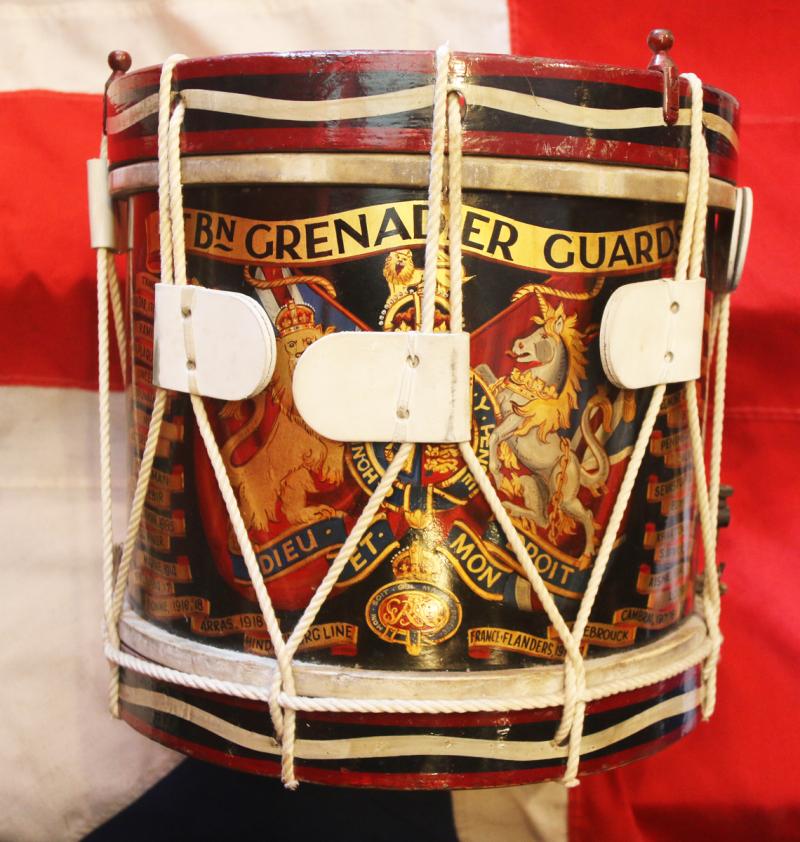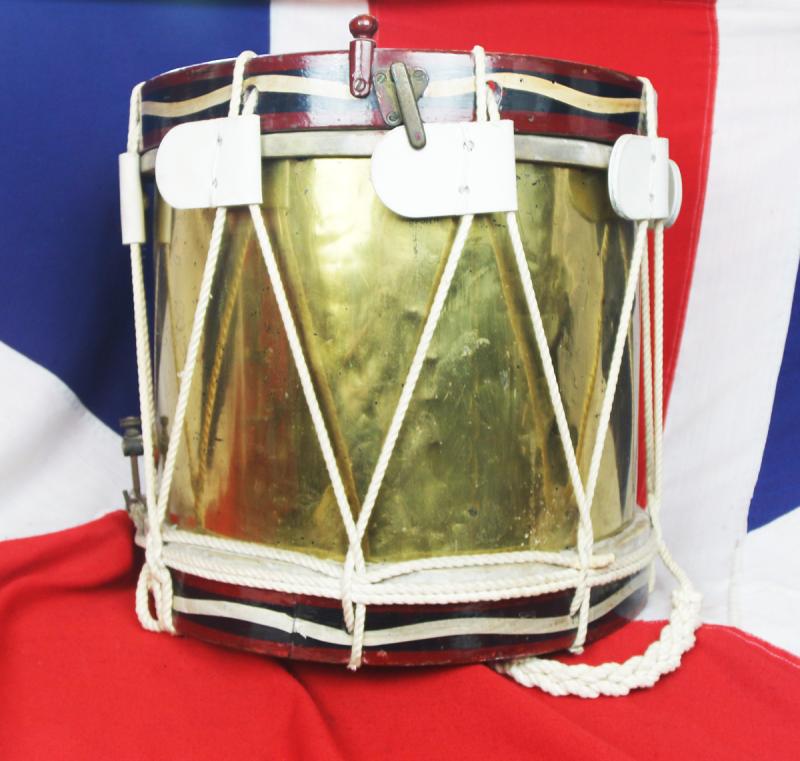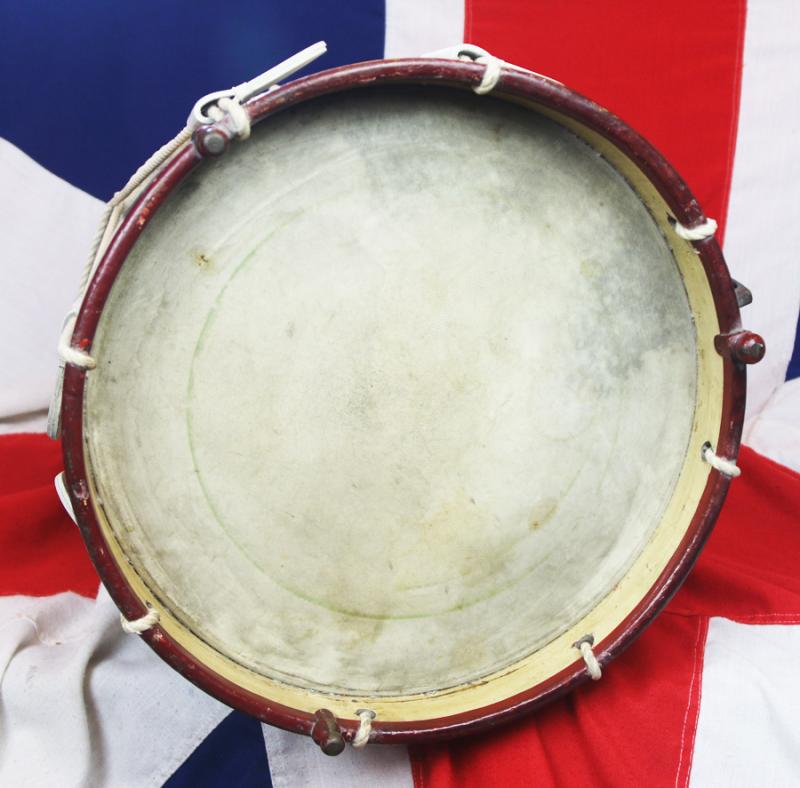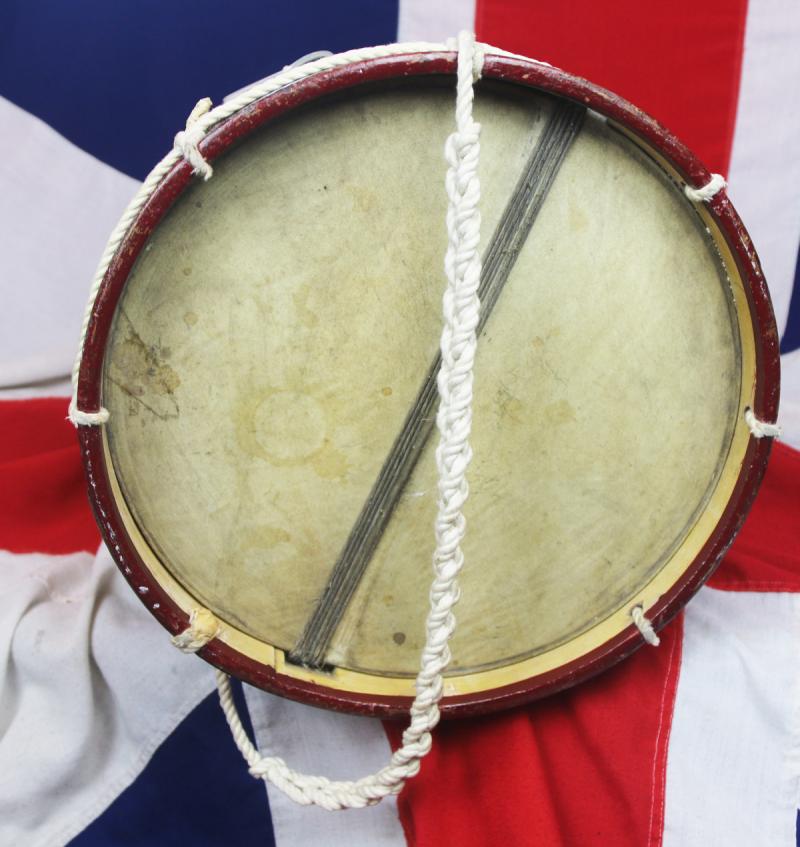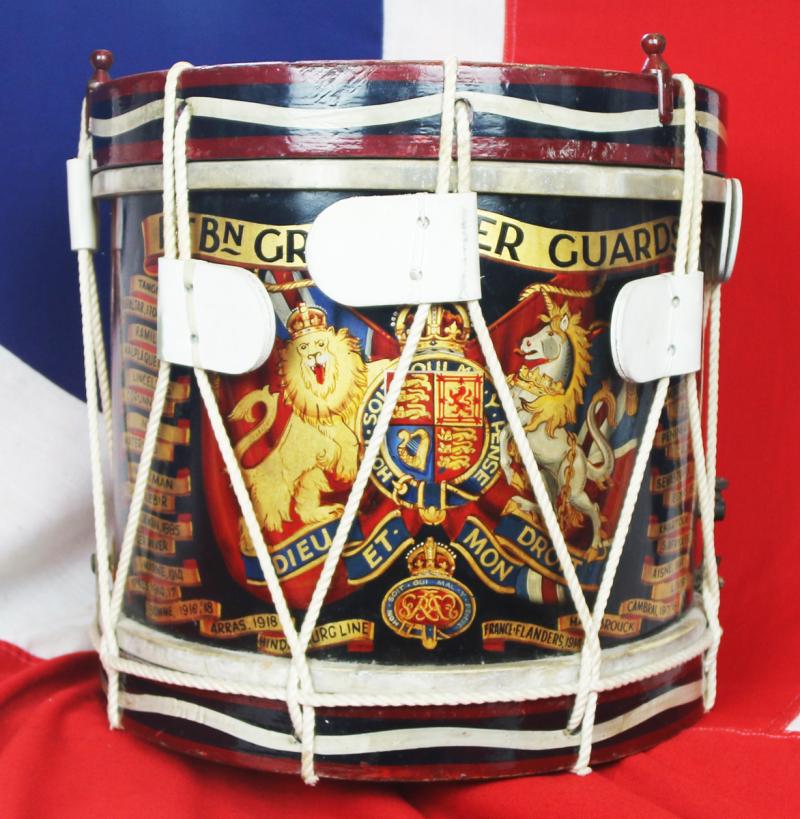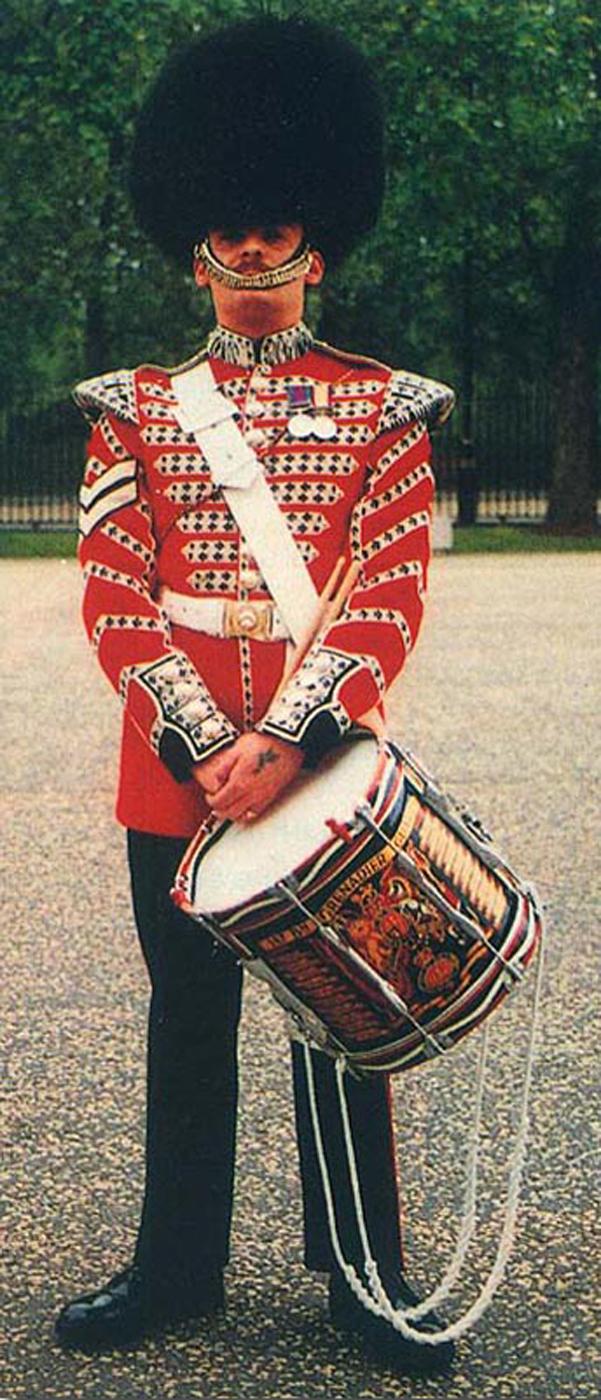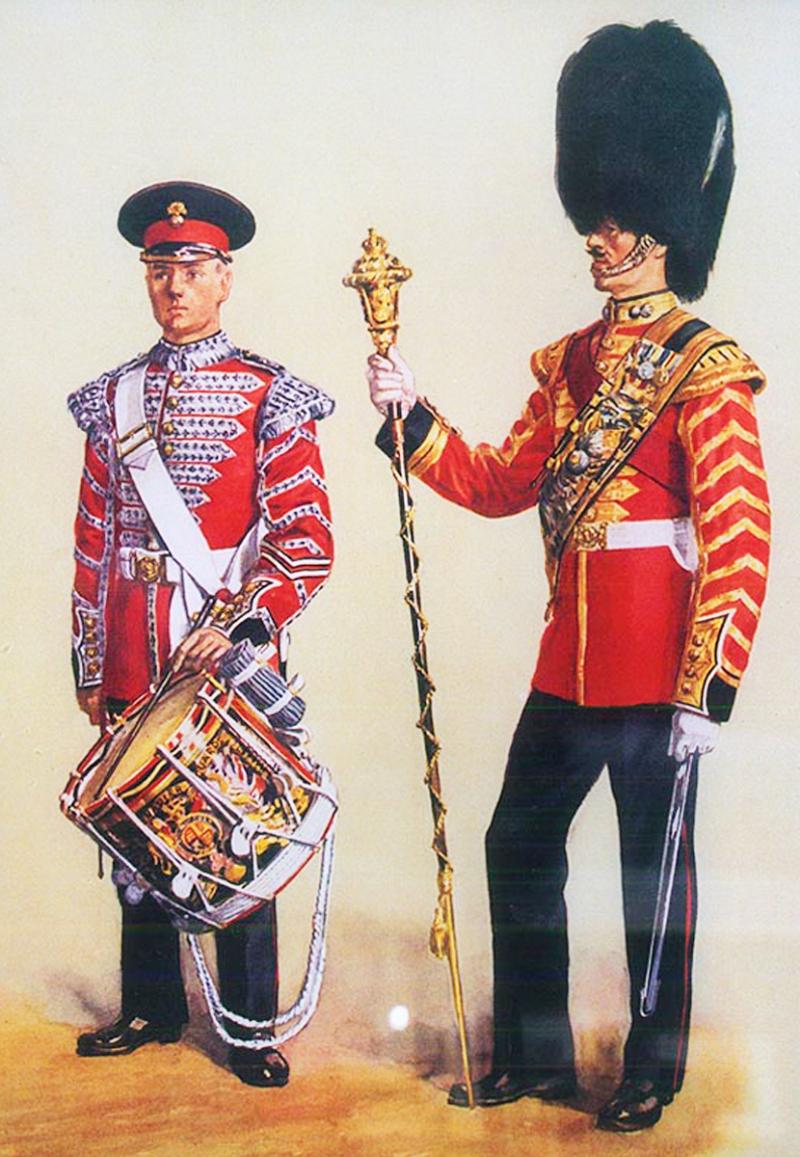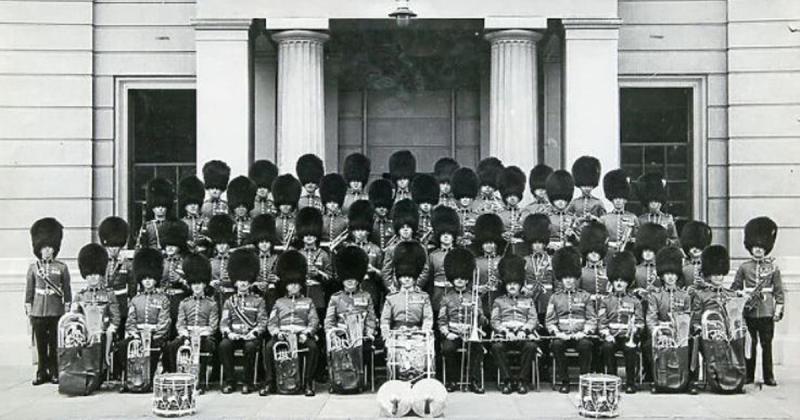A King George Vth, King George VIth & WW2 Regimental Painted 1st Battalion Grenadier Guards, Rope Tension Snare Drum With Battle Honours Up to The End of WW1, 1918
The regiment's early history saw it take part in numerous conflicts including the War of the Spanish Succession, the War of the Austrian Succession, the Seven Years' War, and the Napoleonic Wars; at the end of this period the regiment was granted the "Grenadier" designation by a Royal Proclamation. During the Victorian era, the regiment took part in the Crimean War, the Anglo-Egyptian War, the Mahdist War, and the Second Boer War.
During the First World War, the Grenadier Guards was expanded from three battalions to five, of which four served on the Western Front, while later during the Second World War, six battalions were raised, and several were converted to an armoured role as part of the Guards Armoured Division. These units fought in France, North-West Europe, North Africa and Italy.
After the Second World War the regiment was reduced first to three battalions, then to two, and finally to one battalion in the mid-1990s. Major deployments during this time have included operations in Palestine, Malaya, Cyprus, Northern Ireland, the Gulf War, Afghanistan and Iraq.
The main instrument featured in a Corps of Drums is the side drum. These were originally of a rope-tension design with wide wooden hoops, a wooden shell, and an animal-skin head. In the British Army, this model has been continuously upgraded, with the inclusion of snares, more modern metal rod-tension, nylon hoops, and plastic heads.
The side drum was increasingly decorated throughout the 19th century, until it bore the fully embellished regimental colours of the battalion, including its battle honours. As such, a regiment's drums are often afforded respect.
Historically, all members of a Corps of Drums would beat the various calls on the drum, but some would also play a fife in order to provide melody to accompany long route marches when not in combat. This has been replaced in the modern British Army by the five-key flute.
When the bugle replaced the drum mid-way through the 19th century as the most common means of battlefield communication, it was sounded on parade to give certain orders, to offer salutes, or to play the "Last Post" (or "Taps") at funerals.
As the musical role of a Corps of Drums became more ceremonial in the 19th and 20th centuries, more instruments were added for a more musically complete sound. A modern Corps of Drums may include a range of percussion instruments such as a bass drum, tenor drums, cymbals, and occasionally glockenspiels to fill out the sound.
In the gallery is Macpherson's painting of a young drummer and drum-major show how the Grenadier Guards restored colour and pageantry to post-Great War Britain after the khaki years in the mud of France and Flanders. They are both members of the Corps of Drums despite the similarity between the drum-major's tunic and that of the bandsmen. When performing in public it was easily noticable that the drummers had an abundance of white lace with blue fleur-de-lis patterns while the bandsmen had gold lace. The same difference applies in today's Guards bands but there is less gold on the musician's tunics. The drum-major was still sergeant-drummer at this stage; the down-grading lasted from 1881 to 1928, but they were always unofficially called drum-majors. He was the leader of the Corps of Drums but had gold lace across his chest and ten gold chevrons on his sleeve, including the one that edged his cuff. His cuff also has the gold-laced flap to show his senior NCO rank. The band sergeants shared this distinction. His blue collar is obscured, at the front, by gold lace and he has a silver embroidered grenade badge each side. His shoulder wings are richly laced and fringed with gold. The drum-major's embroidered sash is worn on the left shoulder and his sergeant's crimson sash is worn on the right. He has a sword, as worn by senior NCOs, hanging from his waist-belt, and he holds the gilded mace carried in stately fashion on parades. The drummer has two good-conduct stripes on his left forearm. He also wears the undress forage cap which at this stage is almost identical to the cap worn today except that the peak is not as vertical.
Code: 25413


